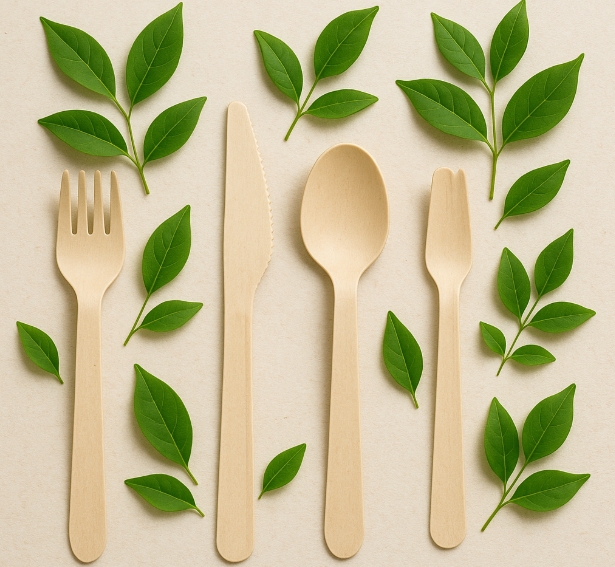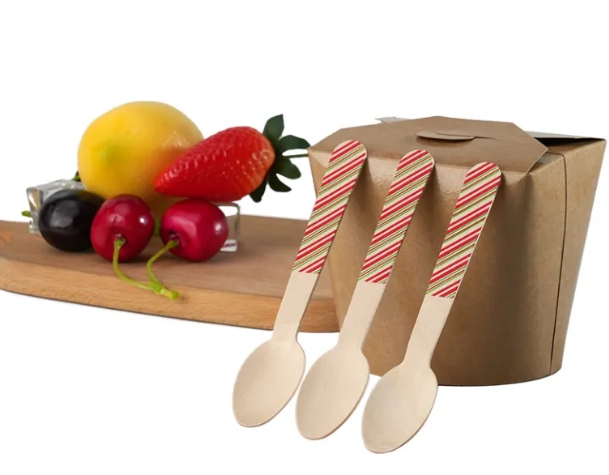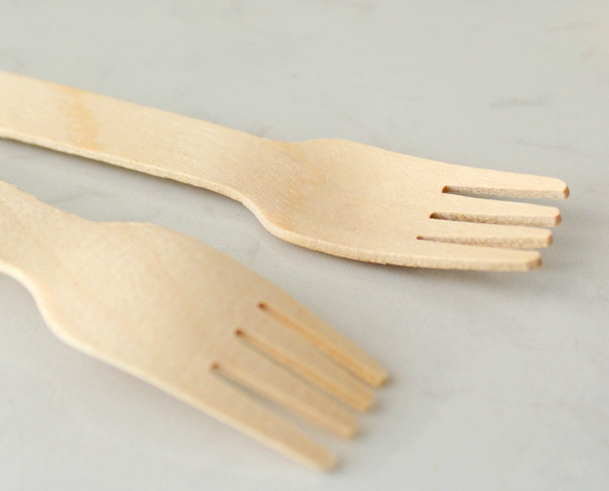
Content Menu
● Japan's Disposable Cutlery Market: Overview and Trends
>> Key Market Drivers
● Major Disposable Cutlery Manufacturers And Suppliers in Japan
>> 1. Hime-Pla Inc
>> 2. Koizumi and Co., Ltd.
>> 3. Haso Ltd.
>> 4. Gold Plast
>> 5. Tosho Chemical
>> 6. WASARA
>> 7. Rengo Co., Ltd.
>> 8. Oji Holdings Corporation
>> 9. Daio Paper Corporation
>> 10. Marumitsu Co., Ltd.
● International Brands and OEM Suppliers
● Sustainability and Regulatory Landscape
>> Japan's Plastic Reduction Law 2025
>> Materials and Innovations
● Product Types and Market Segmentation
>> End-Use Segmentation
● Manufacturing Processes and Quality Standards
● Design and User Experience
● OEM and Private Label Opportunities
● Market Outlook and Future Directions
● Challenges and Opportunities
● Export and Global Collaboration
● Conclusion
● Frequently Asked Questions
>> 1. What are the main materials used by disposable cutlery manufacturers and suppliers in Japan?
>> 2. How are Japanese disposable cutlery products different from those in other countries?
>> 3. What certifications should I look for when sourcing eco-friendly disposable cutlery in Japan?
>> 4. Can I order OEM or private label disposable cutlery from Japanese suppliers?
>> 5. How is Japan's 2025 plastic reduction law impacting the disposable cutlery market?
The Japanese market for disposable cutlery is a dynamic and rapidly evolving sector, shaped by increasing consumer demand for convenience, strict environmental regulations, and a cultural emphasis on aesthetics and quality. This comprehensive guide explores the leading disposable cutlery manufacturers and suppliers in Japan, the latest industry trends, sustainability initiatives, and what makes Japan's disposable cutlery market unique. The article is designed to help international brands, wholesalers, and OEM partners understand and navigate this vibrant landscape.

Japan's Disposable Cutlery Market: Overview and Trends
Japan's disposable cutlery market is projected to reach USD 74.3 million in 2025 and grow to USD 118.2 million by 2035, at a CAGR of 4.75%. This growth is driven by the expansion of foodservice outlets, the boom in food delivery and takeout culture, and stringent government policies promoting sustainability.
Key Market Drivers
- Convenience: Urban lifestyles and the popularity of food delivery services have increased the demand for disposable cutlery.
- Sustainability: Government regulations and consumer preferences are pushing manufacturers toward biodegradable and compostable solutions.
- Aesthetic Appeal: Japanese consumers value high-quality, visually appealing designs that elevate the dining experience.
Major Disposable Cutlery Manufacturers And Suppliers in Japan
1. Hime-Pla Inc
A prominent player in Japan's disposable cutlery industry, Hime-Pla Inc is known for its innovative product lines, including plastic and eco-friendly alternatives. They supply to major foodservice chains and retailers, focusing on both functionality and design.
2. Koizumi and Co., Ltd.
Koizumi and Co., Ltd. specializes in a wide range of disposable tableware, including cutlery made from plastic, wood, and biodegradable materials. Their products are popular in both domestic and international markets, making them a trusted name among disposable cutlery manufacturers and suppliers.
3. Haso Ltd.
Haso Ltd. is recognized for its commitment to sustainable manufacturing, offering a variety of compostable and biodegradable cutlery options suitable for restaurants, catering, and retail. Their focus on environmental responsibility has made them a preferred supplier for businesses seeking eco-friendly solutions.
4. Gold Plast
Gold Plast brings European design sensibilities to the Japanese market, supplying high-end disposable cutlery to hotels, airlines, and luxury events. Their products are known for their elegant appearance and superior functionality.
5. Tosho Chemical
Tosho Chemical is a leading resin processing manufacturer, pioneering the use of bio-based polystyrene (bio PS) in disposable plastic cutlery. Their collaboration with Iwatani Corporation and Trinseo has set new standards for recyclable, high-performance cutlery in Japan. Tosho Chemical's introduction of bio PS in manufacturing plastic cutleries is the first of its kind in Japan, which has attracted industry, media, and public attention.
6. WASARA
WASARA stands out for its award-winning, aesthetically refined disposable tableware made from renewable bamboo, reed, and bagasse. Their products are compostable, tree-free, and inspired by traditional Japanese craftsmanship, making them a favorite for eco-conscious events and high-end hospitality.
7. Rengo Co., Ltd.
A major packaging company, Rengo Co., Ltd. also offers a range of disposable cutlery and tableware, with an increasing focus on eco-friendly materials and processes. Their product lines cater to both large-scale foodservice providers and smaller retail clients.
8. Oji Holdings Corporation
Oji Holdings Corporation leverages its expertise in paper products to manufacture paper-based disposable cutlery, aligning with Japan's move toward sustainable packaging. Their innovative use of renewable resources has positioned them as a leader among disposable cutlery manufacturers and suppliers.
9. Daio Paper Corporation
Daio Paper Corporation is another giant in the paper industry, producing high-quality, compostable disposable cutlery for foodservice and retail. Their commitment to sustainability is evident in their use of certified raw materials and environmentally friendly production processes.
10. Marumitsu Co., Ltd.
Marumitsu Co., Ltd. provides a diverse selection of disposable cutlery, including wrapped and dispensed options, catering to various market needs. Their flexibility and product variety make them a reliable partner for businesses of all sizes.
International Brands and OEM Suppliers
Japan's disposable cutlery market also features notable international suppliers and OEM service providers:
- Dart Container Corporation: A global leader in disposable foodservice packaging, Dart supplies plastic and eco-friendly cutlery to the Japanese market.
- Bioleader®: With certified compostable packaging and cutlery, Bioleader® supports Japanese brands in meeting new regulatory requirements and consumer expectations.
- Dopla S.p.A., Anchor Packaging, Hotpack Global, Biopak, D&W Fine Pack, Apollo Funds: These companies offer a wide range of disposable cutlery solutions, often through local distributors and OEM partnerships.
International collaboration is common, with many Japanese disposable cutlery manufacturers and suppliers working closely with overseas partners to develop customized solutions for export markets.
Sustainability and Regulatory Landscape
Japan's Plastic Reduction Law 2025
Japan's 2025 plastic law restricts the use of disposable tableware and takeaway cutlery, compelling businesses to adopt certified compostable or biodegradable alternatives. Manufacturers and suppliers are responding by:
- Auditing existing packaging lines to identify regulated items
- Partnering with certified suppliers (EN13432, ASTM D6400, TÜV Austria OK Compost)
- Educating staff and consumers on sustainable practices
Materials and Innovations
- Bio-based Plastics: Companies like Tosho Chemical use bio-naphtha derived from renewable resources, offering recyclable and high-performance cutlery.
- Bagasse, Bamboo, and Reed: WASARA and other brands use agricultural waste and renewable fibers to create compostable, tree-free products.
- CPLA and PLA: High-heat resistant, compostable cutlery options are increasingly available, especially for takeout and catering.
The emphasis on sustainability has led to rapid innovation, with disposable cutlery manufacturers and suppliers in Japan developing new materials and processes to reduce environmental impact while maintaining product quality.

Product Types and Market Segmentation
| Product Type |
Market Share (2025) |
Key Features |
| Spoons |
57.1% |
Versatile, essential for soups and desserts |
| Forks & Knives |
42.9% |
Used for main courses, salads, and snacks |
Disposable spoons are the most preferred, holding over half the market share due to their versatility and demand in foodservice outlets.
End-Use Segmentation
| End Use |
Market Share (2025) |
Description |
| Foodservice Outlets |
62.0% |
Restaurants, cafes, catering, food trucks |
| Institutional |
~20% |
Schools, hospitals, corporate cafeterias |
| Household Use |
~18% |
Retail, e-commerce, personal consumption |
The foodservice sector is the largest user of disposable cutlery in Japan, reflecting the country's vibrant restaurant and catering industry.
Manufacturing Processes and Quality Standards
Japanese disposable cutlery manufacturers and suppliers employ advanced techniques to ensure product quality and compliance:
- Thermoforming: Cost-effective, creates lightweight and durable cutlery for large-scale use.
- Injection Molding: Used for premium products, enabling intricate designs and heat resistance.
- Die-Cutting: Common for paper-based cutlery, supporting eco-friendly initiatives.
Strict adherence to food safety and sustainability standards is a hallmark of the industry, with many companies obtaining certifications such as ISO, FSC, and compostability marks.
Design and User Experience
Japanese disposable cutlery is renowned for its:
- Aesthetic Excellence: Sleek, ergonomic, and artistically crafted designs inspired by traditional Japanese art.
- Functional Innovation: Features like textured grips, balanced weight, and multi-functional forms (e.g., chopstick-spoon hybrids).
- Smart Materials: Antibacterial coatings, heat-sensitive color changes, and self-sanitizing surfaces for enhanced hygiene.
These design innovations help Japanese disposable cutlery manufacturers and suppliers differentiate their products in a competitive global market.
OEM and Private Label Opportunities
For international brands, wholesalers, and foodservice operators, Japan offers robust OEM and private label manufacturing services. Leading suppliers provide:
- Custom branding and packaging
- Export documentation and compliance with Japanese regulations
- Product development support, from material selection to design prototyping
Many Japanese disposable cutlery manufacturers and suppliers have established a strong reputation for reliability, quality, and flexibility in OEM partnerships, making them attractive partners for businesses looking to expand their product offerings.
Market Outlook and Future Directions
The Japanese disposable cutlery market is set for continued growth, with sustainability and innovation at its core. As government regulations tighten and consumer awareness rises, manufacturers are investing in:
- Next-generation biodegradable materials (including edible and water-soluble cutlery)
- Closed-loop recycling systems
- Smart packaging and digital traceability
Urbanization and the expansion of online food delivery platforms will further boost demand, especially in densely populated regions like Kanto and Kansai.
Challenges and Opportunities
While the market offers significant growth potential, disposable cutlery manufacturers and suppliers in Japan also face several challenges:
- Regulatory Compliance: Keeping up with evolving regulations requires ongoing investment in research, development, and certification.
- Cost Pressures: Sustainable materials and advanced manufacturing processes can be more expensive, impacting profit margins.
- Consumer Education: Encouraging consumers to properly dispose of compostable or recyclable cutlery remains a challenge.
However, these challenges also present opportunities for innovation and differentiation. Companies that can offer high-quality, sustainable, and well-designed products will continue to thrive in Japan's competitive market.
Export and Global Collaboration
Japanese disposable cutlery manufacturers and suppliers are increasingly looking beyond domestic borders. By collaborating with international partners, they can:
- Access new markets and customer segments
- Share best practices in sustainability and manufacturing
- Develop products tailored to regional preferences and regulations
OEM and private label services are particularly popular among global brands seeking to leverage Japan's reputation for quality and innovation in disposable cutlery.
Conclusion
Japan's disposable cutlery market stands out for its commitment to quality, sustainability, and design excellence. The country's leading disposable cutlery manufacturers and suppliers are at the forefront of innovation, responding to regulatory changes and evolving consumer preferences with advanced materials, eco-friendly processes, and aesthetically pleasing products. For international brands, wholesalers, and OEM partners, Japan offers a wealth of opportunities to collaborate with trusted suppliers and tap into a growing market that values both convenience and environmental responsibility.
As the world moves toward more sustainable consumption, Japanese disposable cutlery manufacturers and suppliers are well-positioned to lead the way, setting new standards for the industry and inspiring positive change on a global scale.

Frequently Asked Questions
1. What are the main materials used by disposable cutlery manufacturers and suppliers in Japan?
Most manufacturers use plastic, wood, bamboo, bagasse, and bio-based plastics. The trend is shifting toward biodegradable and compostable materials due to new regulations and consumer demand.
2. How are Japanese disposable cutlery products different from those in other countries?
Japanese products emphasize aesthetics, ergonomic design, and sustainability. Many are inspired by traditional crafts and offer superior comfort and visual appeal.
3. What certifications should I look for when sourcing eco-friendly disposable cutlery in Japan?
Look for EN13432, ASTM D6400, TÜV Austria OK Compost, BPI, and FDA food-contact compliance. These certifications ensure compostability, food safety, and regulatory compliance.
4. Can I order OEM or private label disposable cutlery from Japanese suppliers?
Yes. Many top manufacturers offer OEM/private label services, including custom branding, packaging, and export documentation.
5. How is Japan's 2025 plastic reduction law impacting the disposable cutlery market?
The law restricts single-use plastics, prompting a shift to certified compostable and biodegradable alternatives. Manufacturers and suppliers are innovating to meet these new standards.

















